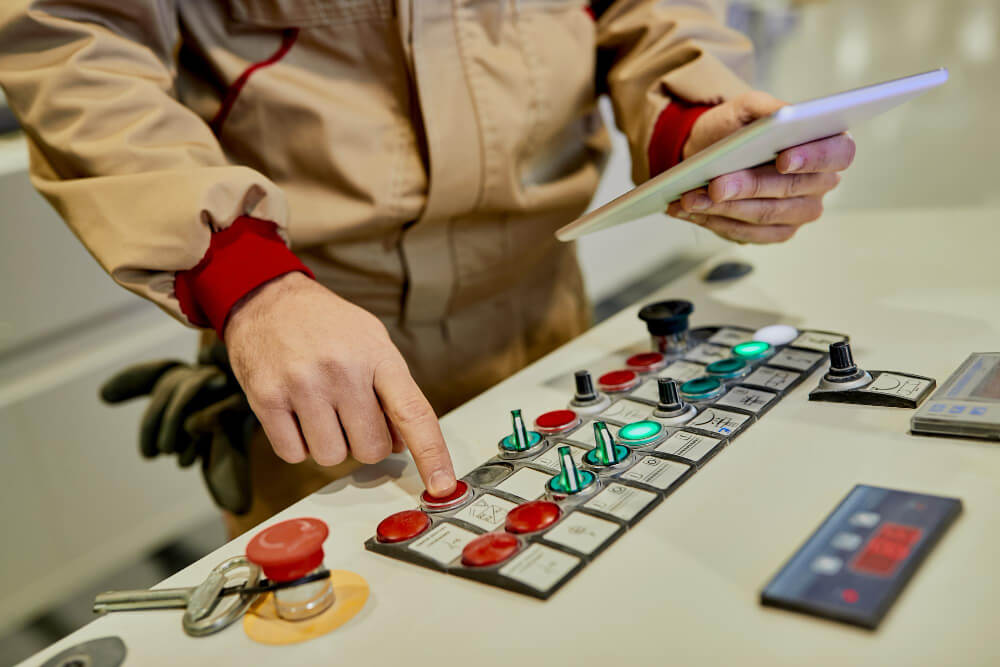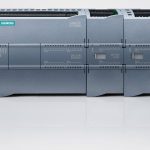PLCs (Programmable Logic Controllers) have been a staple in industrial automation for almost 50 years, and they’re still the top choice for various applications. Even though they’ve been around for a while, PLC technology keeps getting better, and it looks like PLCs will stay the go-to in the industrial world for a long time.
Here are 10 recent tech improvements showing how PLCs are keeping up with the times:
Enhanced Connectivity: PLCs now easily talk to other devices and systems, making them dominant in the latest tech.
Smaller and Smarter: PLCs are getting more compact and intelligent, taking up less space while doing even more.
Improved Speed: The latest PLCs process information faster, boosting overall system speed and efficiency.
User-Friendly Interfaces: User interfaces have become more intuitive, making it easier for operators to interact with and control PLCs.
Remote Monitoring and Control: PLCs can now be monitored and controlled from a distance, making it convenient for managing operations.
Energy Efficiency: New PLCs are designed to be more energy-efficient, contributing to sustainability efforts.
Advanced Diagnostics: PLCs now offer more detailed diagnostics, helping in quick issue identification and resolution.
Cybersecurity Measures: With the rise in digital threats, PLCs have integrated better cybersecurity features to protect industrial systems.
Cloud Integration: PLCs can connect to cloud services, allowing for data storage, analysis, and access from anywhere.
Predictive Maintenance: Through smart algorithms, PLCs can predict when they need maintenance, reducing downtime and improving overall reliability.
These advancements show that PLCs are keeping up with the changing technological landscape, ensuring they remain a crucial component in industrial automation.
Some Famous PLC Brands
There isn’t a single PLC brand or model that is universally used in all industries. The choice of PLCs often depends on the specific requirements of the application, the industry, the cost, and the preferences of the engineers or system integrators involved. However, some of the well-known and widely used PLC manufacturers include:
- Siemens
- Allen-Bradley (Rockwell Automation)
- Schneider Electric
- Mitsubishi Electric
- Omron
- ABB
- Delta Electronics
Each of these manufacturers offers a range of PLCs with different features, capabilities, and programming languages. The choice of PLC depends on factors such as the complexity of the control system, communication requirements, scalability, and the specific needs of the industrial process.
In today’s industrial automation scene, many companies are racing to make their mark by manufacturing their PLCs. The big players like Siemens, Mitsubishi Electric, ABB, Schneider Electric, Hitachi, Panasonic, and Fuji Electric are not just making PLCs but have become major conglomerates in the field.
Others like Rockwell Automation, Omron, Keyence, Unitronics, Fatek, Idec, and Yokagawa are sticking to specializing in PLCs and related automation gear.
The industrial automation landscape is changing, with some PLC makers coming and going, and others merging to stay competitive. Some have added PLC brands to their lineup through acquisitions. Brands like General Electric (GE Fanuc), Telemecanique, Square-D, and Cutler-Hammer were big PLC providers in the past but are no longer active, making room for the next-gen PLCs.
Which PLC is mostly used in the Automation industry? Answered
Siemens, Allen-Bradley (Rockwell Automation), and Schneider Electric are predominantly used in the Automation industry, with Siemens being a notable choice. The PLC market size reached USD 12.83 billion in 2024 and is expected to grow to USD 15.07 billion by 2029, demonstrating the widespread adoption of these brands in various sectors like manufacturing, energy, and automotive for automation and control purposes.
Most used plc
| Industry | PLC Market Size (2024) | Projected Growth (2029) | Notable PLC Brands |
|---|---|---|---|
| Industrial Automation | USD 12.83 Billion | USD 15.07 Billion (CAGR 4.23%) | Siemens, Allen-Bradley, Schneider Electric |
linkedin.com – Industrial Automation Market Size In 2024
linkedin.com – Industrial Automation Market Size 2024-2030 Growth
mordorintelligence.com – PLC Market – Share, Size & Growth
industrytoday.co.uk – Programmable Logic Controller (PLC) Market Share, Size
gminsights.com – Programmable Logic Controller (PLC) Market Size
imarcgroup.com – PLC Market Share, Size-Programmable Logic Controller
One intriguing way to gauge their popularity is by examining market share, and a recent study by Interact Analysis sheds light on the PLC giants leading the way.
According to market share, the most commonly used PLC was the Siemens Simatic PLC. The second most popular PLC was Rockwell Automation Allen Bradley PLC. Followed by Mitsubishi Melsec PLC, Schneider Modicon PLC, and Omron Sysmac PLC.
Siemens Simatic PLC: Siemens takes the crown as the most popular PLC, boasting the Simatic series. Known for its reliability and robust features, Simatic PLCs have become the go-to choice for a myriad of industrial applications. From manufacturing plants to energy facilities, Siemens has firmly established itself at the forefront.
Rockwell Automation Allen Bradley PLC: Hot on Siemens’ heels is Rockwell Automation’s Allen Bradley PLC. Renowned for its user-friendly interfaces and advanced technology, Allen Bradley PLCs secure the second spot in popularity. Industries worldwide trust this powerhouse for seamless automation.
Mitsubishi Melsec PLC: Mitsubishi Melsec PLC emerges as a strong contender for the third spot. Recognized for its speed and efficiency, Melsec PLCs have gained popularity in various sectors. The adaptability and performance of Mitsubishi’s offering have propelled it into the limelight.
Schneider Modicon PLC: Schneider Electric’s Modicon PLCs claim the fourth position. Known for precision and innovation, Modicon PLCs have left an indelible mark in the automation landscape. Industries seeking reliability and advanced features often turn to Schneider Electric.
Omron Sysmac PLC: They offer smart solutions for industrial automation. With a focus on user-friendly interfaces and cutting-edge technology, Omron has secured its place among the top PLC choices.
Conclusion:
As we navigate the intricate world of industrial automation, these PLC giants continue to shape the industry’s landscape. Siemens, Rockwell Automation, Mitsubishi, Schneider Electric, and Omron stand tall as the most popular choices, each bringing unique strengths to the table. In an ever-evolving technological era, these PLCs demonstrate that age is just a number when it comes to innovation and reliability. As industries march forward, these PLC titans remain pivotal in driving efficiency, productivity, and progress.

Passionate Training Advisor and Student Counselor dedicated to empowering individuals through upskilling and reskilling initiatives. Specialized in Industrial Automation, BMS, Home Automation, and Process Control Instrumentation. Committed to bridging the knowledge gap and fostering growth in IT & Cybersecurity.







